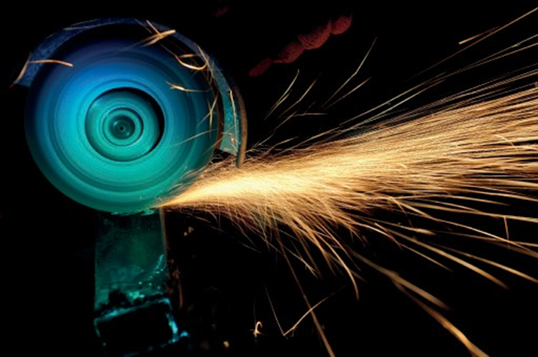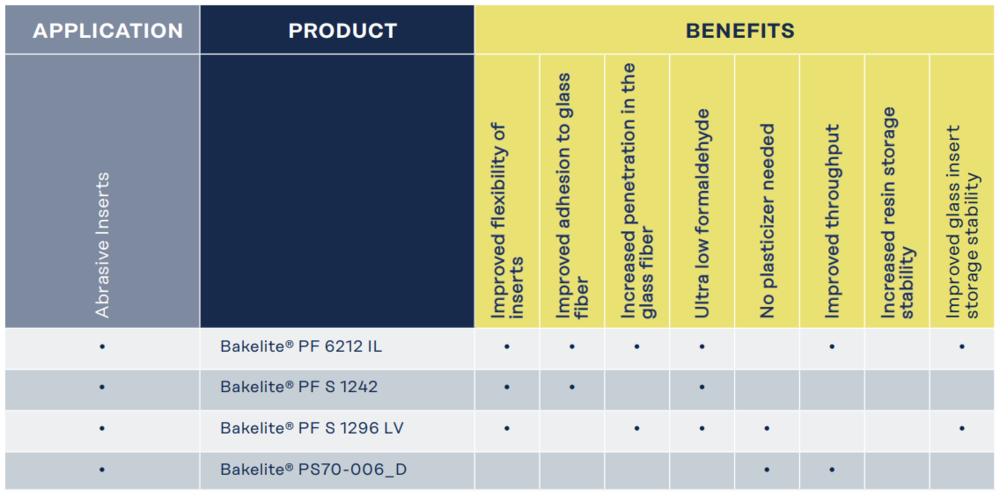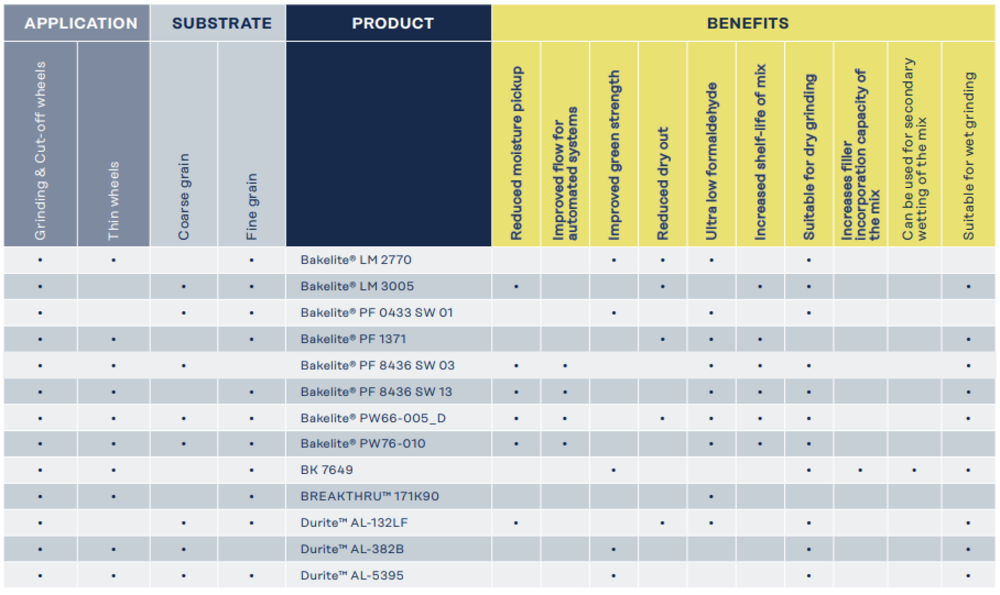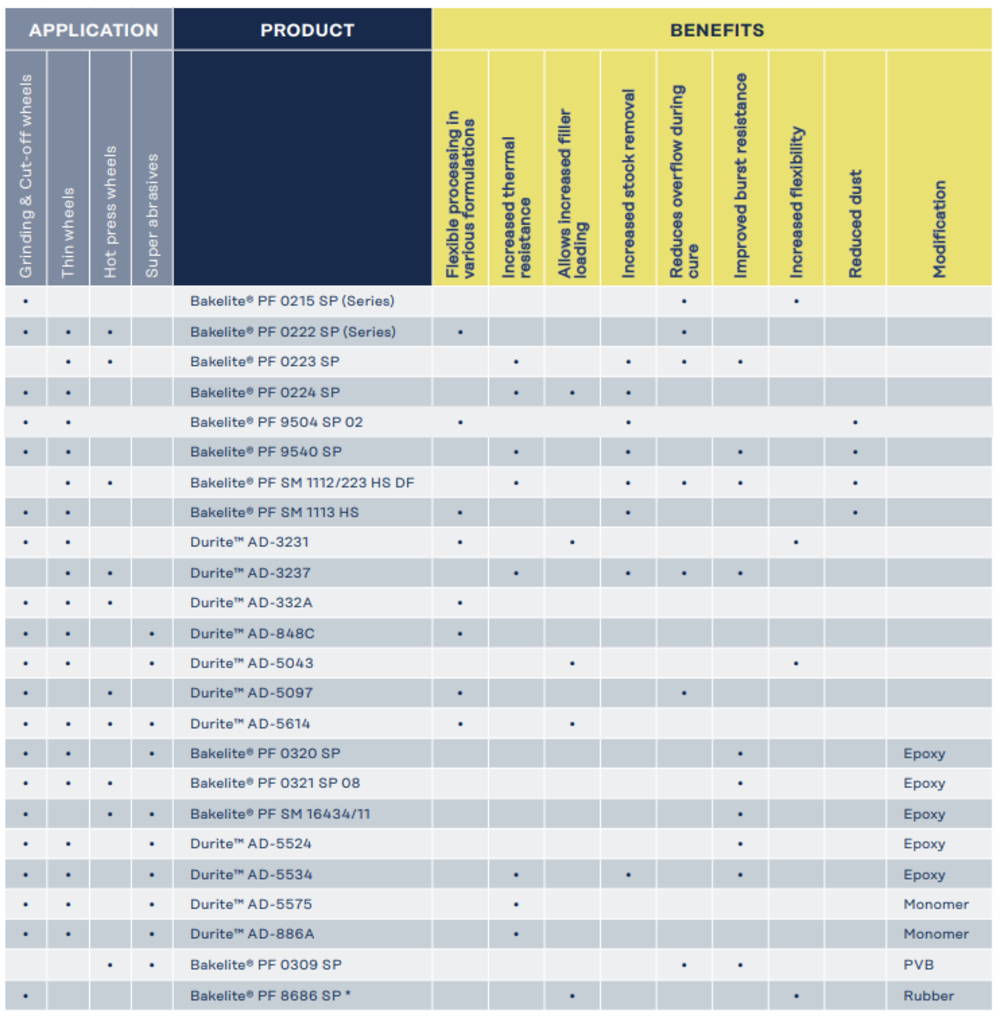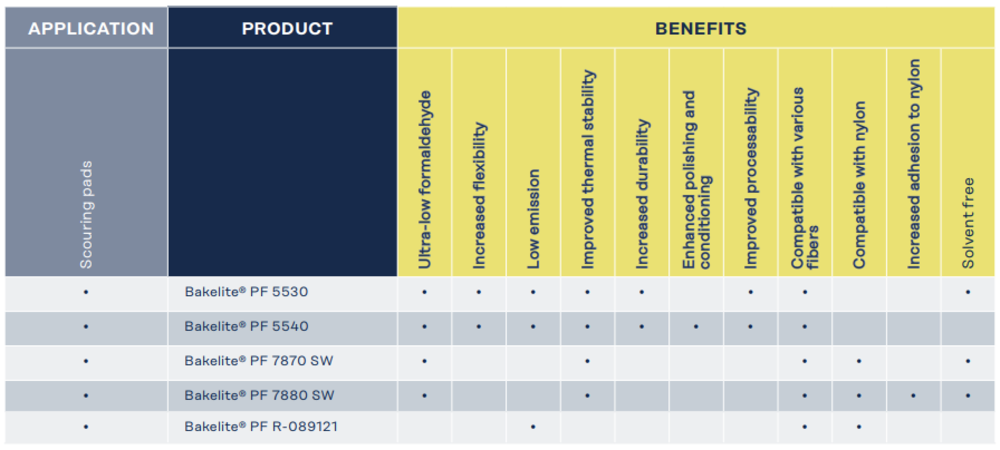Bakelite® Resins for Abrasives
BONDED ABRASIVES / ABRASIVE INSERTS / COATED ABRASIVES SCOURING PADS
Bakelite Synthetics supplies a broad range of Bakelite® and Durite™ phenolic resins for the most demanding abrasive applications. We are a leader in urea and phenolic binders for abrasive production, providing solutions that deliver high temperature resistance and dimensional stability, as well as processing improvements. Abrasive resins thermally adhere abrasive grains to substrates for superior polishing and finishing. Our expertise spans both bonded and coated abrasive applications including grinding wheel fabrics (glass fiber inserts) and sandpaper, as well as backing materials and scouring pads.
Bonded Abrasives
Bakelite® powder novolacs and liquid resoles enable high-strength compression-molded abrasive wheels. These resins are suited to both cold and hot compression molding for the production of a range of abrasive wheels, including those utilizing glass fabric prepregs for reinforcement.
The Bakelite® resin offering for bonded abrasive applications includes:
- Powder novolacs (with and without modification)
- Alkaline and alkaline-free liquid resoles
- Solvent-based resin solutions
- Low free monomer options

